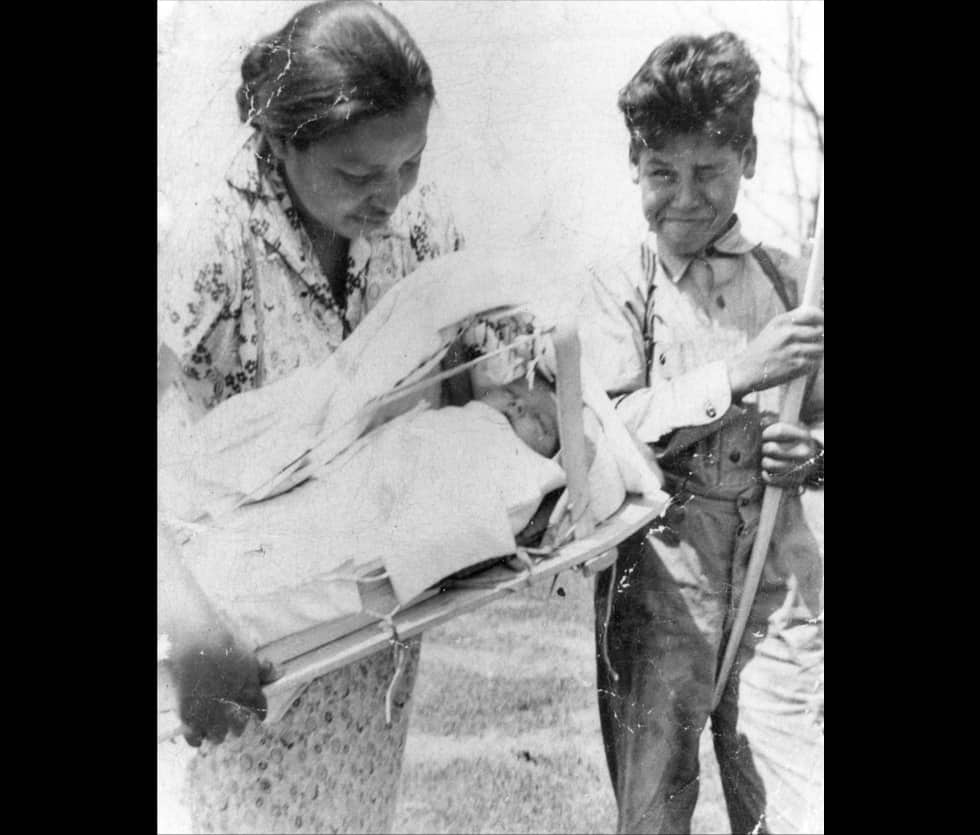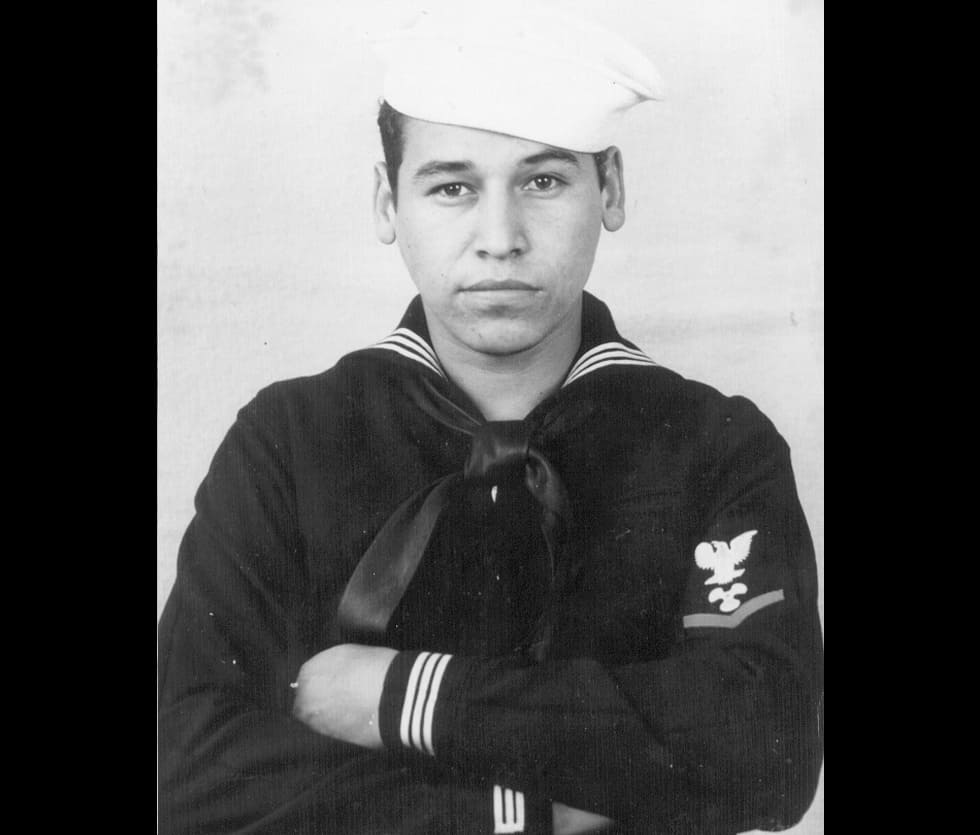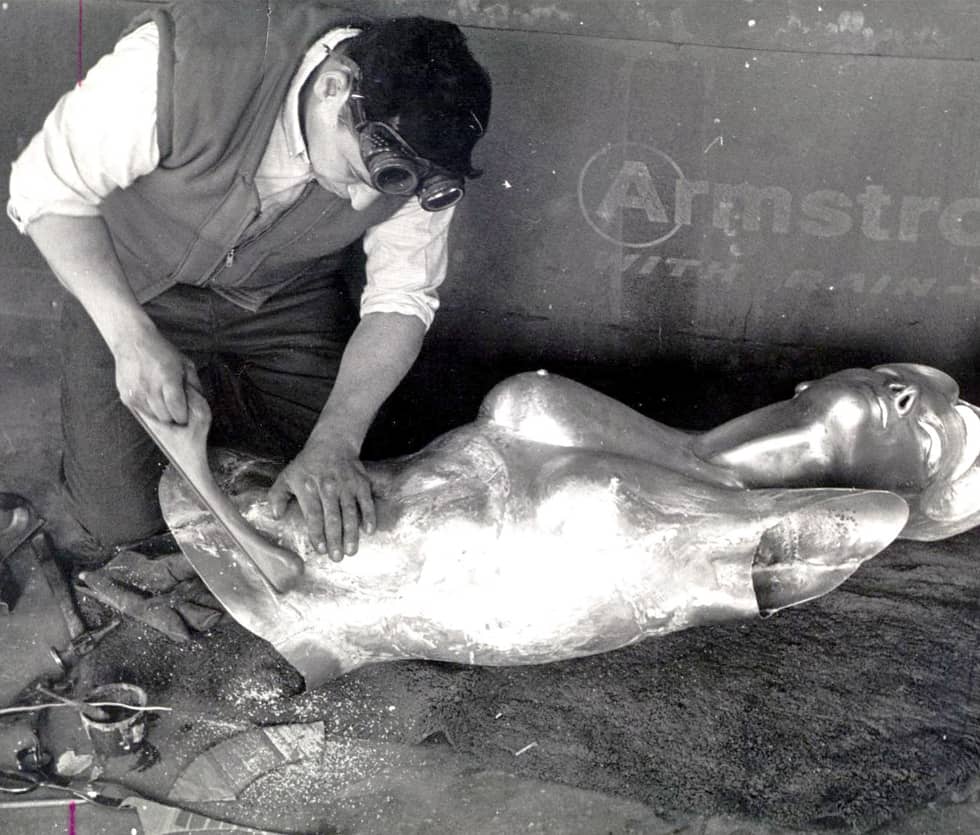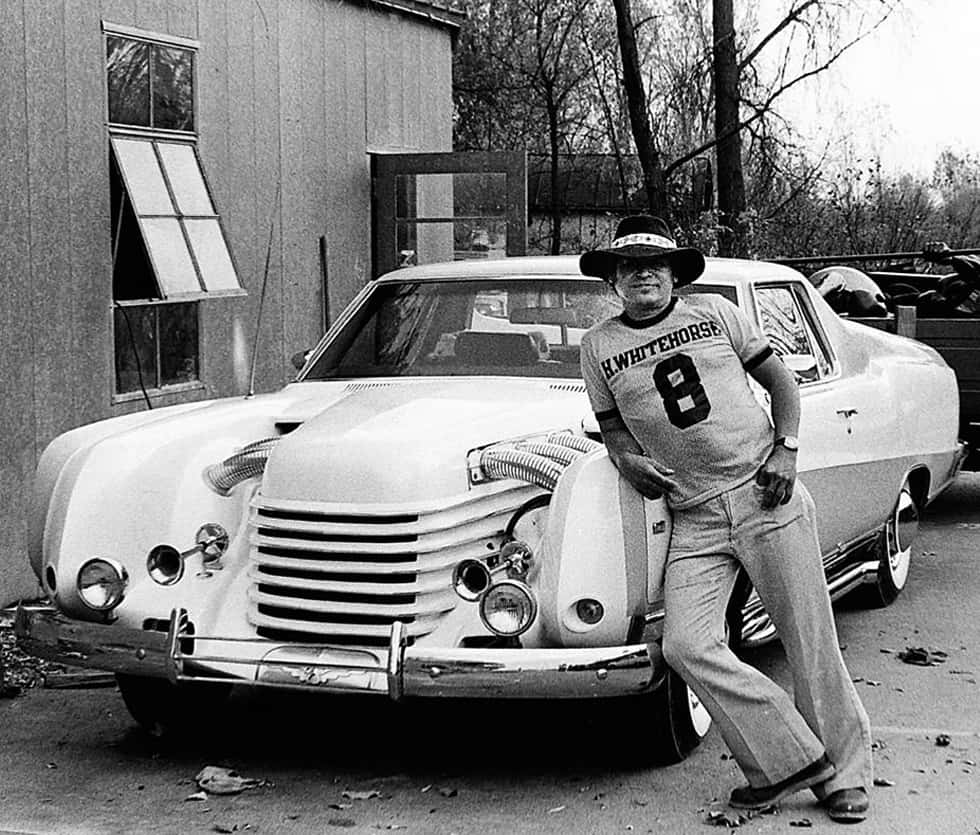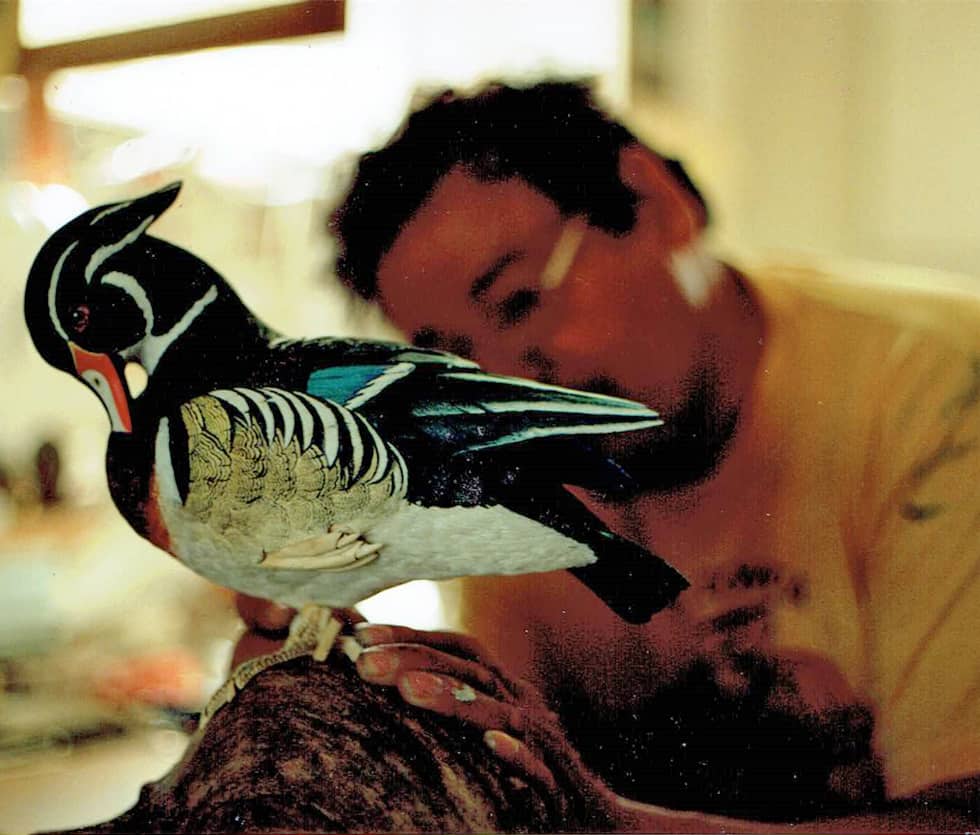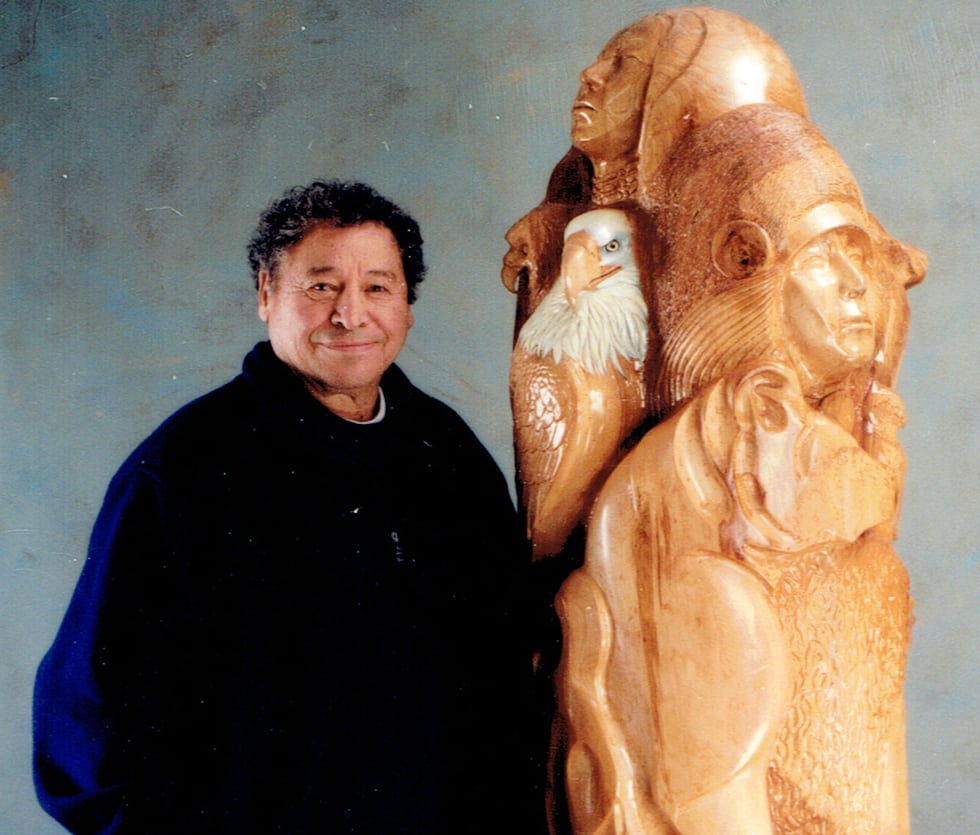THE LIFE OF HARRY WHITEHORSE
1927-2017
Born in Black River Falls, Wisconsin in 1927
World War 2 & Post War Years
The interest in art continued through military service in WWII, where Harry had the opportunity to view the great art museums of the Orient and Europe. This influence convinced Harry to pursue a career in art after his tour of duty.
At the University of Wisconsin, Harry studied human and animal anatomy. He graduated from the Arthur Colt School of Fine Arts in Madison, Wisconsin where he continued to study oil painting in the style of the old masters. He also graduated from a local technical college where he learned welding and metal fabrication.
The Metal Years
In the 1960’s and 1970’s, Harry’s artistic talent and metal working skills combined to produce a series of metal sculptures which helped him gain prominence in the art world. Eventually, the physical demands of pounding metal forced Harry to turn to other mediums.
Custom Cars
Harry owned and operated Chief Auto Body for 40 years in Monona, Wisconsin. Throughout his life, he was fascinated by cars and applied his artistic sensibilities by using the blank canvas of a stock automobile and then customizing to his own standards.
Revisiting Wood Carving
In the 1980’s Harry began carving birds and animals from wood for private commissions. He drew inspiration from the times when as a child he carved wooden objects beside his Uncle George Seymour. Harry applied his astounding skills of concentration and observation to celebrate Wisconsin’s wildlife and his deep connection to the woodlands. Every feather and hair was meticulously defined using a wood burner and then the piece was finished with oil paints, carefully layered to portray the essence of the subject matter. Harry’s hawks, chickadees, cardinals, hummingbirds, and others were crowd favorites at art exhibits around the country. Even though the carvings were physically easier to create compared to hammering metal sculptures, he still desired to sculpt on a larger scale.
